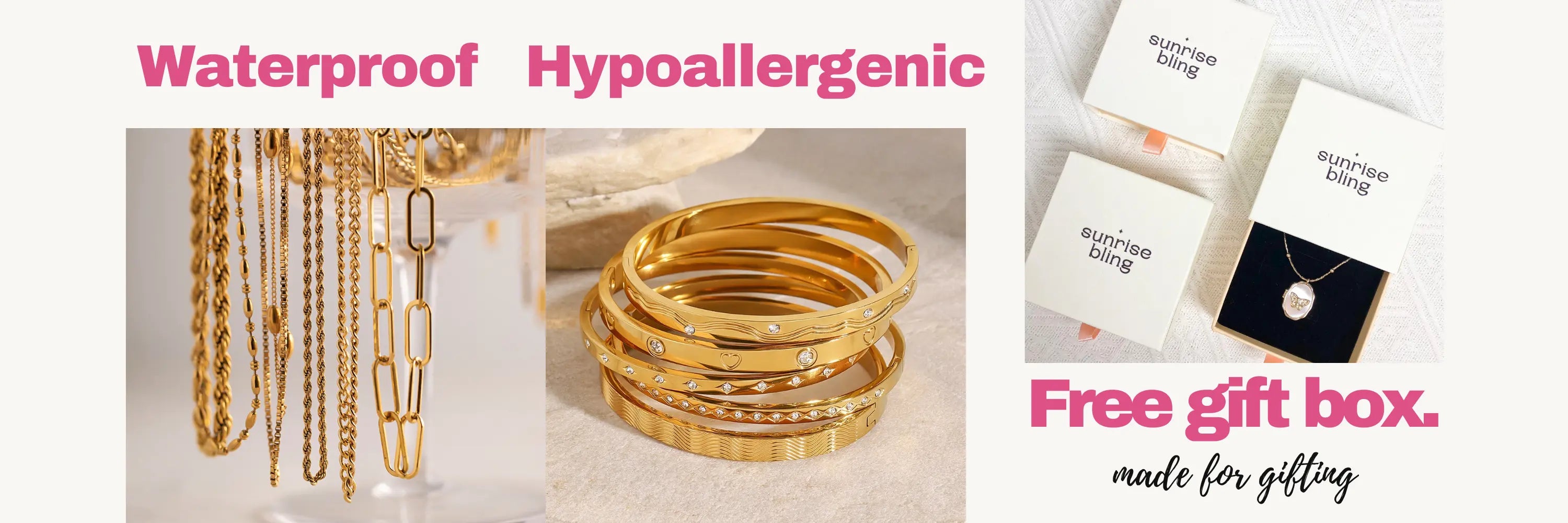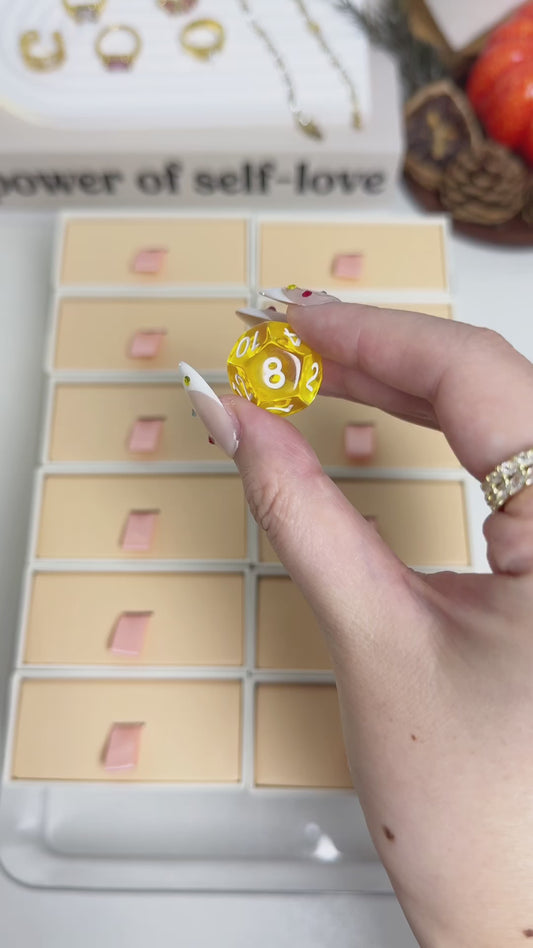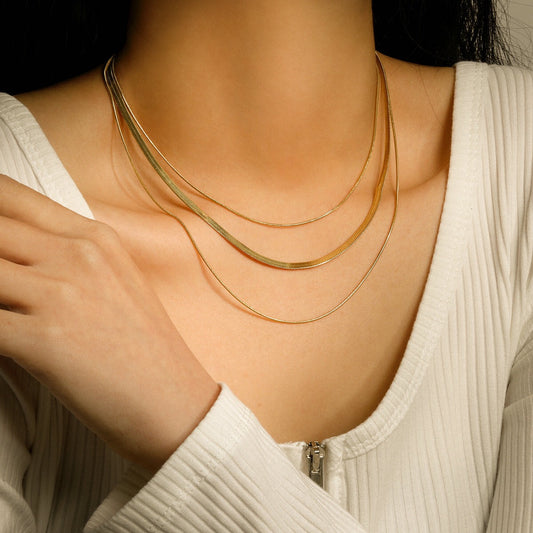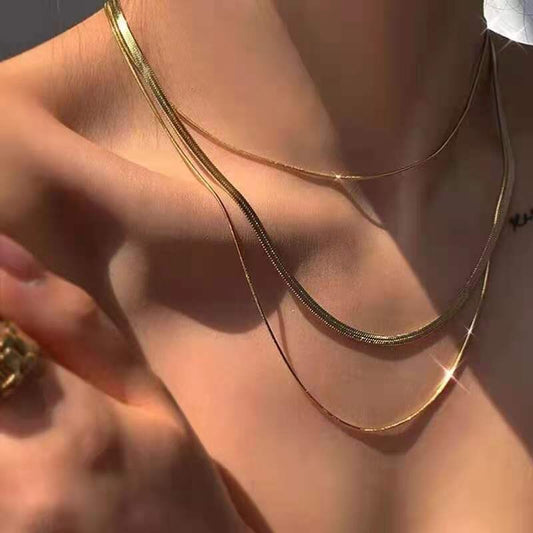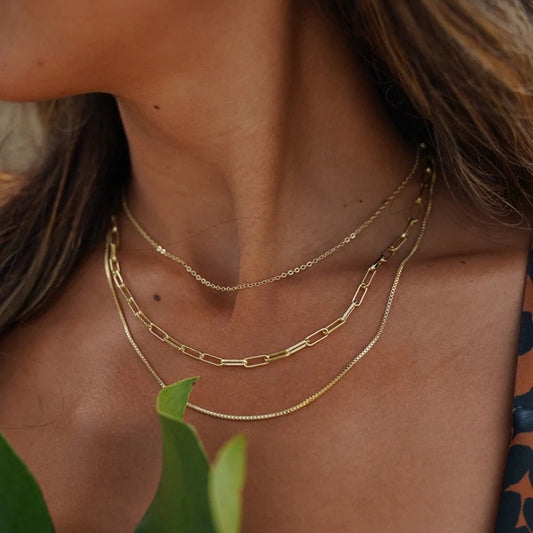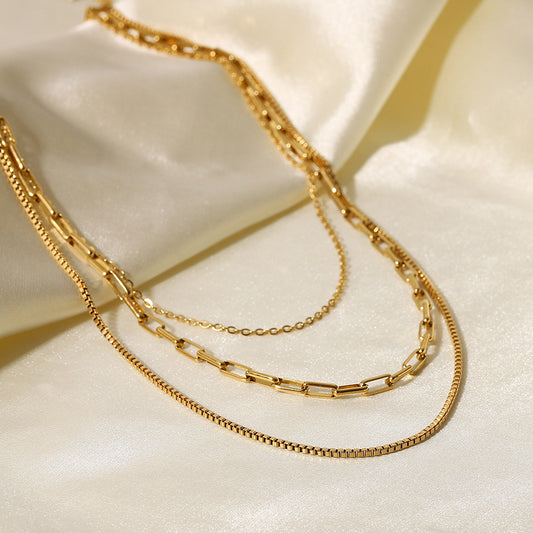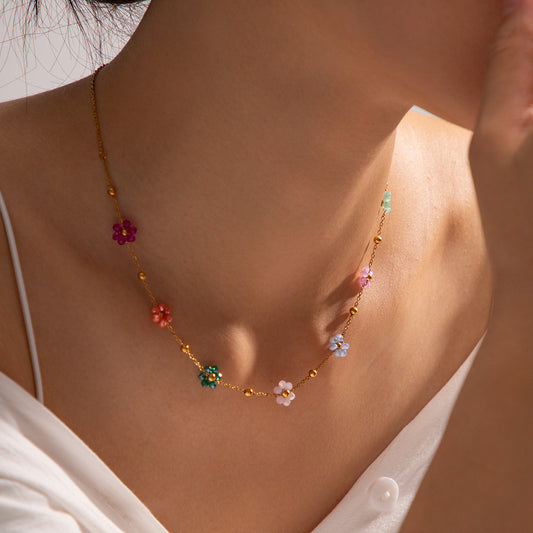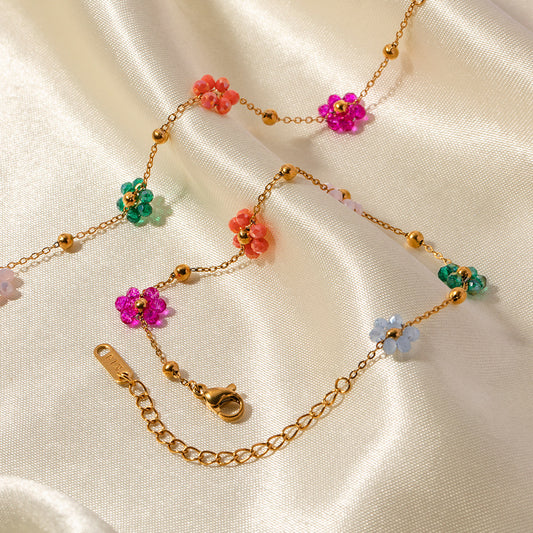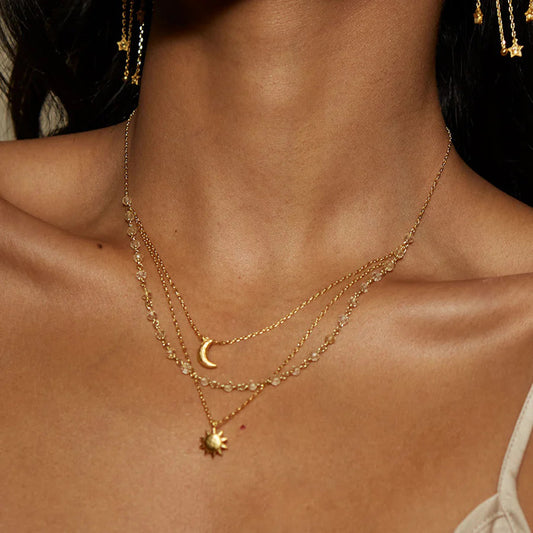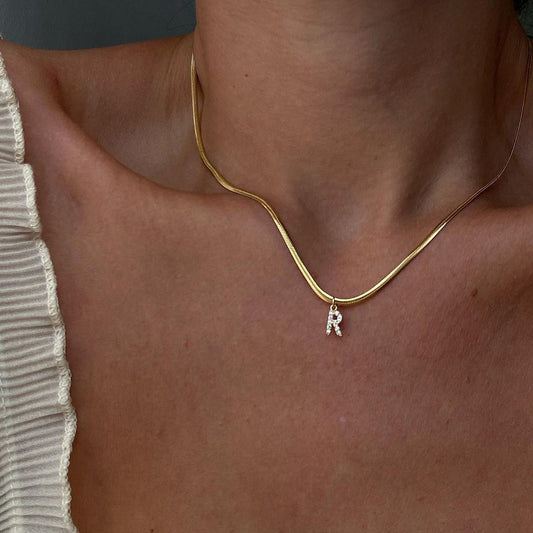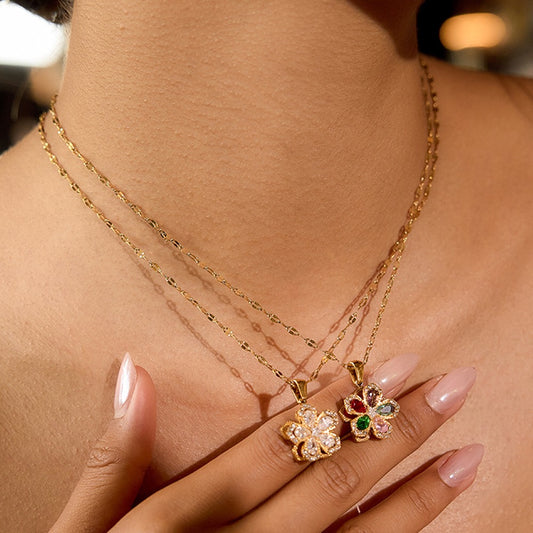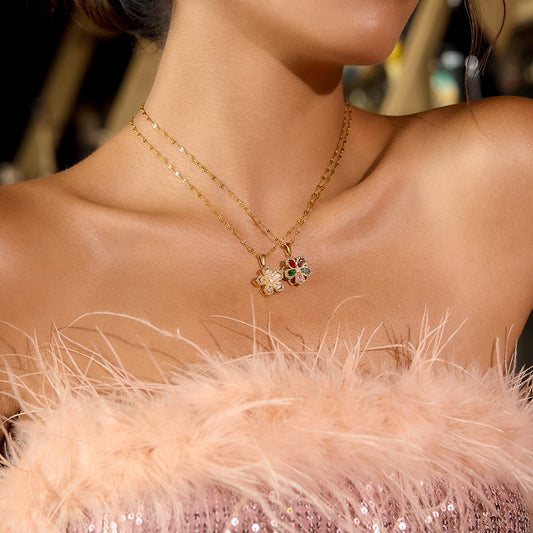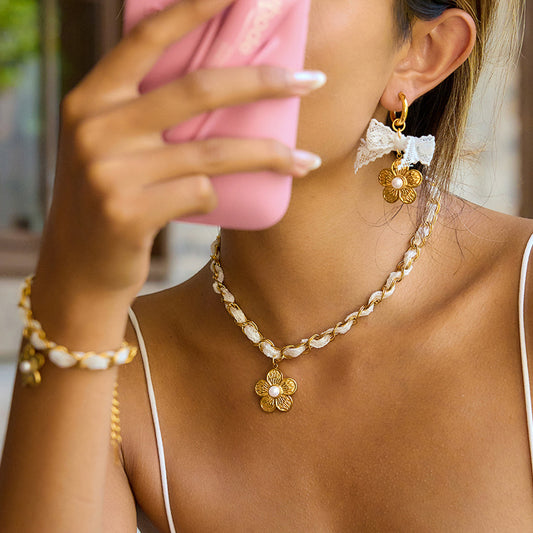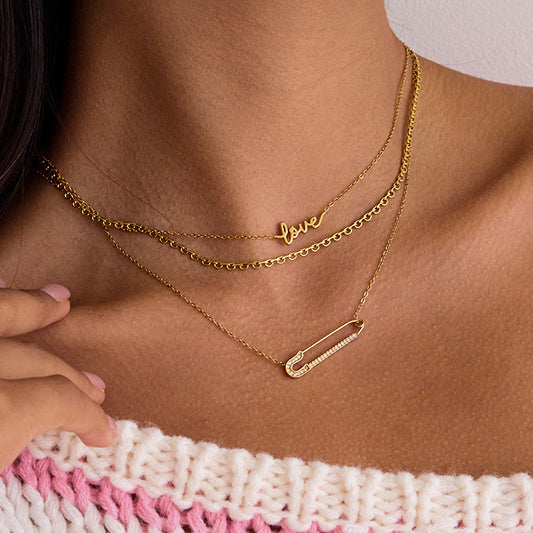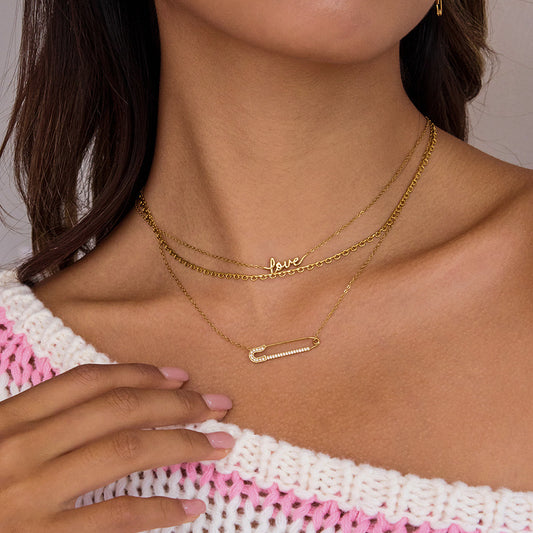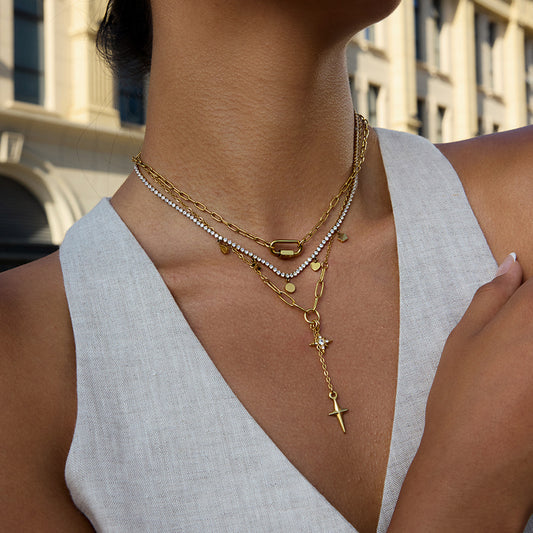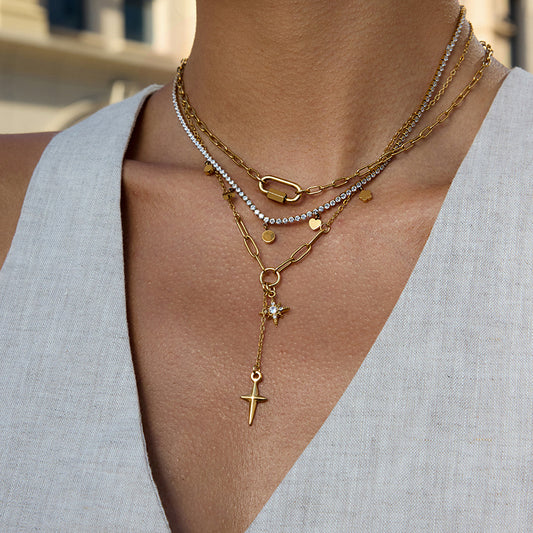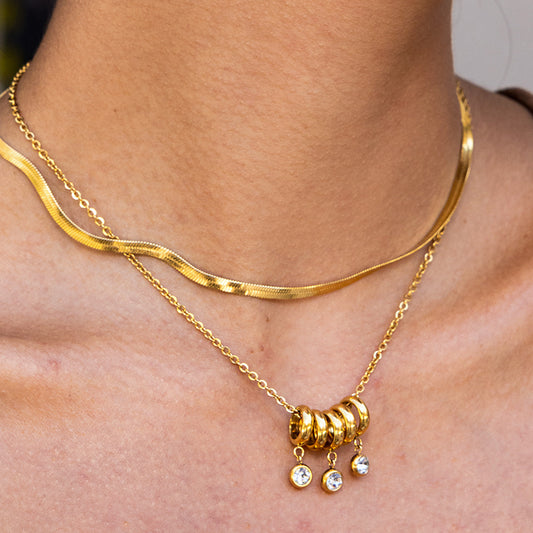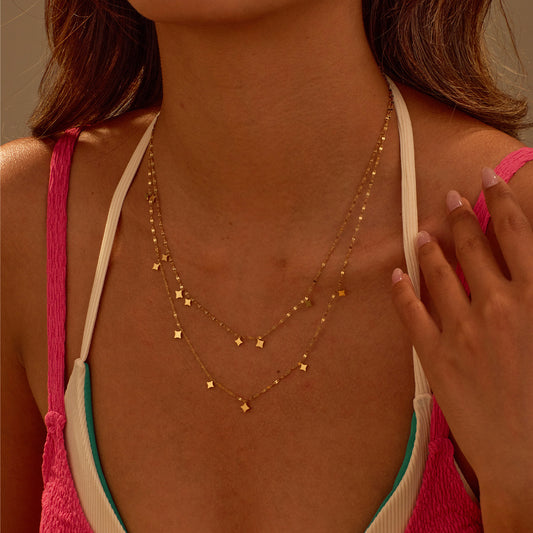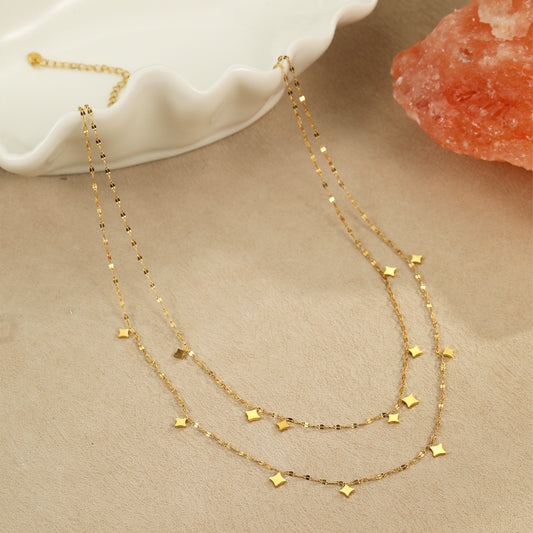Tarnish Free Jewelry represents a modern approach to adornment, offering lasting beauty and minimal upkeep in a world where convenience and longevity are increasingly valued. As part of the dynamic global jewelry market, which was valued at an impressive USD 356.36 billion in 2023, consumers are actively seeking pieces that not only reflect their personal style but also withstand the demands of daily life without losing their luster. Tarnish-free jewelry directly addresses this need, providing durable, beautiful, and worry-free options that retain their sparkle and appeal over time, allowing wearers to enjoy their favorite pieces without the hassle of frequent cleaning and polishing.

What is Tarnish Free Jewelry?
Resistant to Discoloration
Tarnish free jewelry is crafted from materials that inherently resist oxidation and discoloration caused by exposure to air, moisture, chemicals, and body oils.
Low Reactivity
These materials are chosen for their low reactivity, meaning they do not easily form compounds on their surface that result in the dull, darkened appearance known as tarnish.

Maintains Appearance
The primary characteristic is the jewelry's ability to maintain its original shine and color over extended periods without the need for special cleaning to remove tarnish.
Why is Tarnish Free Jewelry so popular
Minimal Maintenance
The most significant appeal of tarnish free jewelry is its low maintenance. It doesn't require regular polishing with treated cloths or special solutions, saving time and effort.

Lasting Beauty
It retains its shine and aesthetic appeal over time, ensuring that your favorite pieces always look their best without the unsightly discoloration of tarnish.
Durability and Longevity
Materials used for tarnish-free jewelry are often also very durable, resistant to scratches and wear, contributing to the overall longevity of the piece.
Ideal for Everyday Wear
Its ability to withstand exposure to common elements makes tarnish-free jewelry perfect for everyday wear, including activities where other jewelry might tarnish more quickly.

Value for Money
While some tarnish-free materials like platinum are expensive, options like stainless steel and PVD coated jewelry offer durable, beautiful alternatives at more accessible price points, providing excellent value.
Popular styles of Tarnish Free Jewelry
Stainless Steel Jewelry
Popular for its affordability and strength, stainless steel is naturally tarnish-free and used for a wide range of jewelry, including chains, rings, bracelets, and earrings.

Platinum Jewelry
A precious metal that is naturally white and highly resistant to tarnish and corrosion, platinum is a popular choice for fine tarnish-free jewelry like engagement rings and wedding bands.
High-Karat Gold Jewelry
While lower karats of gold can tarnish due to the presence of other metals like copper and silver in the alloy, 24k gold is pure and does not tarnish. 18k and 14k gold tarnish very slowly compared to silver due to their high gold content.
PVD Coated Jewelry
Jewelry with a Physical Vapor Deposition coating applied over a base metal (like stainless steel) is highly tarnish-resistant because the PVD layer protects the underlying metal.
Titanium Jewelry
Lightweight, strong, and highly resistant to corrosion and tarnish, titanium is used for various jewelry items, particularly in modern or minimalist designs and for those with metal sensitivities.
How to wear Tarnish Free Jewelry
Enjoy Worry-Free Wear
The primary benefit of tarnish free jewelry is that you can wear it confidently in various situations without the constant worry of it losing its shine.
Suitable for Daily Activities
Wear your tarnish-free pieces during daily routines, handwashing, and even light exposure to moisture without concern for immediate tarnishing.
Layering and Styling
Incorporate tarnish-free pieces into your regular jewelry rotation and layered looks, knowing they will maintain their appearance alongside other items.
Still Practice Basic Care
While resistant, it's still a good idea to wipe down your tarnish-free jewelry periodically to remove dirt, oils, and residues that can accumulate and dull its appearance.
Tarnish Free Jewelry: must have jewelry for summer
Resists Sweat and Moisture
Summer activities often involve increased sweat and exposure to moisture. Tarnish-free jewelry is ideal as it won't react or tarnish when exposed to these elements.
Withstands Sunscreen and Lotions
While it's generally best to apply lotions and sunscreens before putting on any jewelry, tarnish-free materials are more resistant to potential reactions or residue buildup from these products compared to tarnishing metals.
Perfect for Water Activities
Many tarnish-free materials, like stainless steel and titanium, are suitable for wearing during swimming (in pools or the ocean), making them perfect companions for summer water activities.
Maintains Shine in Humid Conditions
High humidity in the summer can accelerate tarnishing for susceptible metals. Tarnish-free jewelry stays bright and shiny regardless of humidity levels.
how to clean Tarnish Free Jewelry
Simple Cleaning Process
Cleaning tarnish free jewelry is straightforward and doesn't require special tarnish removers.
Soap and Water
Use warm water and a few drops of mild dish soap. Gently clean the jewelry with a soft cloth or brush.
Rinse and Dry Thoroughly
Rinse the piece completely under clean water to remove soap residue. Dry it thoroughly with a soft, lint-free cloth to prevent water spots.
Avoid Abrasives
Do not use abrasive materials like rough cloths or harsh scrubbing pads, as these could potentially scratch the surface of the metal or coating.
does nickel free jewelry tarnish
Whether or not nickel free jewelry tarnishes depends on the other metals present in the alloy, not the absence of nickel. For example, sterling silver is nickel-free but contains a high percentage of silver alloyed with copper, and both silver and copper are prone to tarnishing when exposed to air and moisture. Conversely, many stainless steel alloys are low-nickel or effectively hypoallergenic due to how the nickel is bound, and they do not tarnish. Therefore, being nickel-free does not guarantee that jewelry will be tarnish-free.
how to make jewelry tarnish free
Jewelry is made tarnish-free or tarnish-resistant primarily through the choice of materials and applied finishes during manufacturing:
Using Tarnish-Resistant Metals
Crafting jewelry from metals that do not easily react with their environment, such as stainless steel, platinum, titanium, or high-karat gold.
Alloying
Creating alloys where the combination of metals results in increased resistance to oxidation and tarnishing.
Applying Protective Coatings
Adding a durable, non-reactive layer to the surface of the jewelry through processes like PVD (Physical Vapor Deposition) coating. This creates a barrier that prevents the underlying metal from tarnishing.
Plating (with limitations)
While traditional plating (like gold plating over brass) can provide a tarnish-free surface initially, the plating layer can wear off over time, exposing the base metal which may tarnish. Thicker or higher-quality plating lasts longer.
what is tarnish free jewelry made of
Tarnish free jewelry is commonly made of the following materials:
-
Stainless Steel: An alloy containing chromium that resists rust and tarnish.
-
Platinum: A noble metal that is highly resistant to corrosion and tarnish.
-
High-Karat Gold (14k, 18k, 24k): While 24k is pure gold and doesn't tarnish, lower karats are alloys. The higher the gold content (karat), the more resistant to tarnish the alloy is.
-
Titanium: A strong, lightweight metal that is highly resistant to corrosion and tarnishing.
-
PVD Coated Metals: A durable coating applied over a base metal (often stainless steel) that provides a tarnish-resistant finish.
where to buy tarnish free jewelry
Tarnish free jewelry is widely available from various retailers. You can find it:
-
Online Jewelry Stores: Many e-commerce websites specializing in jewelry offer extensive collections of tarnish-free pieces made from materials like stainless steel, titanium, and PVD coated metals. Look for reputable online retailers with clear product descriptions detailing the materials used.
-
Specialty Boutiques: Jewelry boutiques often carry curated selections, including pieces made from tarnish-resistant materials.
-
Department Stores: The jewelry departments in larger department stores typically offer a range of options, including fine jewelry in platinum or higher-karat gold and fashion jewelry in stainless steel.
-
Directly from Jewelers/Designers: Independent jewelers and designers may offer custom or handcrafted pieces using tarnish-free metals.
When purchasing, always check the product description or ask the retailer about the specific materials used to ensure the jewelry is indeed tarnish-free or highly tarnish-resistant.
Frequently asked questions about Tarnish Free Jewelry
Is tarnish free jewelry real gold or silver?
Not necessarily. While platinum and high-karat gold are naturally tarnish-free precious metals, many popular tarnish-free options are made from other materials like stainless steel or titanium, or are base metals with durable tarnish-resistant coatings.
How long does tarnish free jewelry last?
Tarnish free jewelry is designed for longevity. The material itself (like solid stainless steel or platinum) will not tarnish and can last a lifetime. Tarnish-resistant coatings like PVD can last for years, depending on wear and care, before potentially showing signs of wear.
Can I swim with tarnish free jewelry?
Many types of tarnish free jewelry, especially those made from stainless steel, platinum, or titanium, are suitable for wearing while swimming in freshwater or saltwater. However, it's always a good idea to rinse your jewelry with fresh water afterward to remove salt or chlorine and dry it thoroughly.
Why does my "tarnish free" jewelry look dull?
While it doesn't tarnish, jewelry can still get dirty from body oils, lotions, soap residue, and environmental grime. A simple cleaning with mild soap and water will restore its shine.
Tarnish Free Jewelry: Shine Brighter, Worry Less!
Tarnish Free Jewelry offers the ultimate combination of beauty, durability, and convenience, making it an increasingly popular choice for discerning consumers. Understanding what materials make jewelry tarnish-free and why this quality is so valuable, particularly for everyday wear and summer activities, highlights its status as a must-have accessory. From the inherent resistance of stainless steel and platinum to the advanced protection of PVD coating, tarnish-free options ensure your jewelry remains radiant with minimal effort. Say goodbye to the frustration of tarnished pieces and embrace the enduring sparkle of tarnish free jewelry. Explore the world of tarnish free jewelry and enjoy lasting beauty that stays worry-free!


